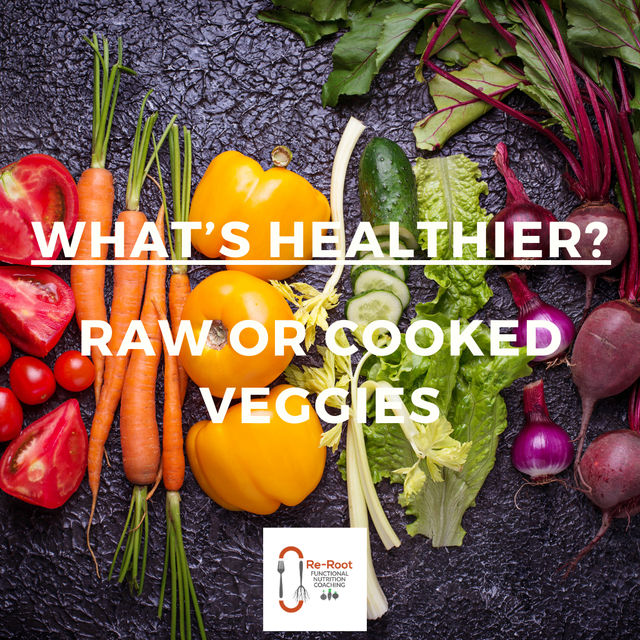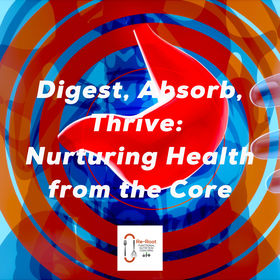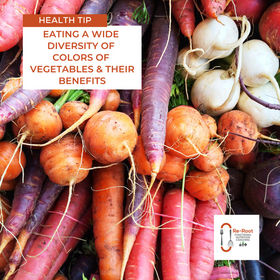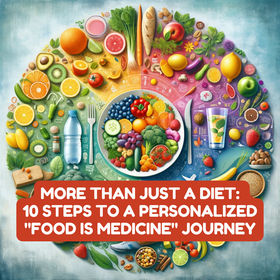
Cooking Techniques That Enhance Vegetable Nutrient Bioavailability
Every day, countless individuals grapple with gut-related health issues, ranging from bloating and discomfort to serious digestive disorders. One powerful tool at our disposal to address and alleviate these concerns is our diet. The cornerstone of health and wellness is the inclusion of vegetables. They are a source of essential nutrients and play an indispensable role in ensuring our gut functions at its peak, directly influencing our overall well-being. By understanding the nutritional differences and benefits of raw vs. cooked vegetables, we can make informed choices that improve health outcomes.
This comprehensive guide delves into the principles of functional nutrition, emphasizing the profound relationship between food choices and overall health. We’ll explore the debate surrounding the consumption of raw vs. cooked vegetables, their respective health benefits, and ways to integrate them into our daily diets.
The Multifaceted Role of Vegetables in Gut Health
Vegetables offer numerous benefits targeting our gut health:
Fiber:
Essential for digestion, vegetable fiber supports regular bowel movements and fosters beneficial gut bacteria.
Phytonutrients:
Abundant in vegetables, these compounds strengthen our immune system, curbing inflammation and potentially mitigating chronic diseases.
Polyphenols:
These natural elements modulate gut bacteria, aiding in digestion, strengthening immunity, and possibly combating various ailments.
Now, let’s delve into the specifics of raw and cooked vegetable consumption.
Raw vs. Cooked: What’s the Verdict?
Raw Vegetables:
Enzymatic Integrity:
- Maintain natural enzymes to aid in digestion and metabolic activities.
- Vitamin Preservation: Ensure heat-sensitive vitamins, like vitamin C and certain B vitamins, remain intact.
- Bioactive Compounds: Offer compounds, such as broccoli’s sulforaphane, which may diminish with cooking.
Cooked Vegetables:
Digestibility:
- Cooking breaks down cellular barriers, allowing for better nutrient absorption.
- Nutrient Bioavailability: Enhances accessibility of certain nutrients, like lycopene in tomatoes.
- Antinutrient Reduction: Minimizes compounds that might hinder nutrient absorption.
Raw Vegetables: Unlocking Vital Nutrients
Raw consumption preserves enzymatic integrity, ensures retention of heat-sensitive vitamins, and sustains bioactive compounds in certain vegetables:
Broccoli:
- Key Compounds: Glucosinolates, sulforaphane, and vitamin C [1].
- Functional Benefits: Potential anti-cancer properties, detoxification support, and bolstered immune system.
- When Eaten Cooked: Cooking broccoli can degrade some of its vitamin C, but it increases the bioavailability of other compounds like sulforaphane.
Cabbage:
- Key Compounds: Vitamin C, glucosinolates, and polyphenols [2].
- Functional Benefits: Enhanced immunity, cellular protection, and reduced inflammation.
- When Eaten Cooked: Cooking cabbage might reduce its vitamin C content but makes it easier to digest and can enhance the flavor.
Red Bell Peppers:
- Key Compounds: Vitamin C, capsaicin, and quercetin.
- Functional Benefits: Boosts immune response, metabolism enhancement, and antioxidative properties.
- When Eaten Cooked: Roasting or grilling can reduce vitamin C but enhances flavors and makes certain antioxidants more absorbable.
Kale:
- Key Compounds: Vitamins A, C, K, and kaempferol.
- Functional Benefits: Vision support, immune function, bone health, and oxidative stress protection [3].
- When Eaten Cooked: Cooking kale can decrease its oxalic acid content, making minerals like calcium more available.
Watercress:
- Key Compounds: Nitrates, vitamin K, and phenethyl isothiocyanate.
- Functional Benefits: Cardiovascular support, bone health, and potential anti-cancer effects.
- When Eaten Cooked: While gentle cooking might reduce vitamin C, it can make it gentler on the stomach.
Arugula:
- Key Compounds: Calcium, potassium, folate, and glucosinolates.
- Functional Benefits: Bone reinforcement, muscle function, cellular repair, and potential detoxifying effects.
- When Eaten Cooked: Cooking arugula can mellow its peppery flavor and make it easier to digest.
Cooked Vegetables: Enhancing Bioavailability and Digestibility
Cooking can amplify nutrient accessibility, increase certain nutrient bioavailability, and neutralize antinutrients:
Tomatoes:
- Key Compounds: Lycopene, vitamin C, and beta-carotene [4].
- Functional Benefits: Cardiovascular support, cellular protection, and reduced cancer risk.
- When Eaten Raw: Raw tomatoes retain more vitamin C, but cooking increases the bioavailability of lycopene, a potent antioxidant.
Spinach:
- Key Compounds: Iron, calcium, magnesium, and lutein.
- Functional Benefits : Bone fortification, energy enhancement, muscle function, and eye health support.
- When Eaten Raw: Consuming spinach raw preserves its vitamin C content, but cooking enhances the availability of iron and calcium.
Carrots:
- Key Compounds: Beta-carotene, alpha-carotene, and luteolin.
- Functional Benefits: Vision support, skin health enhancement, and antioxidative properties.
- When Eaten Raw: Raw carrots provide a crunch and preserve more polyphenols, but cooking boosts the bioavailability of beta-carotene.
Asparagus:
- Key Compounds: Inulin, vitamin K, and saponins.
- Functional Benefits: Gut microbiota nourishment, blood clotting support, and immune boosting.
- When Eaten Raw: In its raw form, asparagus retains more vitamin C, but cooking can make certain nutrients like inulin more digestible.
Mushrooms:
- Key Compounds: B-vitamins, selenium, and beta-glucans [5}.
- Functional Benefits: Immune fortification, antioxidative properties, and metabolic support
- When Eaten Raw: Some edible mushrooms can be enjoyed raw, but cooking them can neutralize potential toxins and enhance nutrient absorption.
Eggplant:
- Key Compounds: Nasunin, chlorogenic acid, and lutein.
- Functional Benefits: Antioxidative support, cognitive function enhancement, and visual health.
- When Eaten Raw: Raw eggplant contains more chlorogenic acid, but cooking can neutralize solanine, a natural toxin.
Implementing Knowledge: A Mediterranean-Based Meal Plan
The anti-inflammatory attributes of the Mediterranean diet synergize with our vegetable analysis, leading to potential long-term health benefits.
Here’s a 3-day meal plan to try out to get the best of both worlds: (Gluten-free, dairy-free & sugar-free)
Day 1:
Breakfast: Steel-cut oat porridge with chia seeds, fresh mixed berries, soft-boiled eggs, and avocado slices.
Snack 1: Green smoothie made from raw kale, flax seeds, almond butter, and unsweetened almond milk.
Lunch: Lentil and quinoa salad with raw red bell peppers, roasted eggplant, and an olive oil vinaigrette.
Snack 2: Carrot and celery sticks served with hummus dip.
Dinner: Grilled salmon atop a bed of sautéed spinach, paired with a raw arugula and steamed artichoke heart salad, dressed with extra virgin olive oil.
Day 2:
Breakfast: Scrambled eggs on gluten-free toast topped with avocado and sun-dried tomatoes, complemented by raw watercress and sautéed mushroom side.
Snack 1: Mixed nuts with a side of apple slices.
Lunch: Chicken and chickpea bowl with roasted zucchini, raw cherry tomatoes, olives, and a sprinkle of nutritional yeast, dressed in a tahini-lemon sauce.
Snack 2: Coconut yogurt topped with chia seeds and a drizzle of monk fruit sweetener.
Dinner: Beef stir-fry with bell peppers, snap peas, and broccoli, served over brown rice with a side of raw spinach and roasted eggplant salad.
Day 3:
Breakfast: Chia seed pudding with blueberries and hemp seeds, served with sautéed asparagus.
Snack 1: A smoothie bowl with raw spinach, strawberries, flax seeds, and almond butter.
Lunch: Tuna salad made with raw carrots, steamed Brussels sprouts, fresh basil, garlic, and a dressing of extra virgin olive oil and lemon juice.
Snack 2: Walnuts paired with pear slices.
Dinner: Grilled turkey breast served with quinoa and a salad of mixed greens, raw cucumber, and roasted red pepper slices, drizzled with a balsamic reduction dressing.
This meal plan is diligently crafted to provide nourishment while being gluten-free, dairy-free, and sugar-free, aligning with functional nutrition principles and catering to dietary sensitivities.
Actionable Steps:
Diversify Your Diet:
Ensure you consume both raw and cooked vegetables regularly.
Research and Experiment:
Pay attention to how different vegetables (and their preparation methods) make you feel. Adjust your diet accordingly.
Educate Others:
Share this knowledge with friends and family. Collective awareness can lead to healthier communities.
Seek Professional Guidance:
If you have persistent digestive issues, consider consulting with a functional nutrition coach.
By taking these steps, we can be proactive in our health journey, giving our bodies the best possible chance to thrive.
Conclusion
Preparation and consumption methods can alter a vegetable’s nutritional profile. By leveraging insights from functional nutrition and catering to individual digestive needs, we can create a harmonious balance between raw and cooked vegetable consumption. The stakes are high; by making informed decisions about vegetable intake, we actively invest in our long-term health, potentially reducing the risk of gut-related issues and enhancing our quality of life.
Footnotes
- The role of sulforaphane in cancer chemoprevention and health benefits: a mini-review ↩
- Chemopreventive Glucosinolate Accumulation in Various Broccoli and Collard Tissues: Microfluidic-Based targeted Transcriptomics for By-Product Valorization ↩
- Dietary sources of lutein and zeaxanthin carotenoids and their role in eye health ↩
- Tomatoes, tomato-based products, lycopene, and cancer: Review of the epidemiologic literature ↩
- Mushrooms as a source of anti-inflammatory agents ↩
Are you suffering from symptoms of chronic inflammation?
You have three options…
Option One: Do nothing.
It’s tempting to ignore the signs and hope they’ll disappear alone. But here’s the truth: untreated chronic inflammation issues can impact your overall well-being and quality of life. If you continue going about your days with unaddressed gut issues, you can only expect it to get worse.
Option Two: Treat yourself.
Taking matters into your own hands is a brave and empowering step. You always have the option to educate yourself about health and make positive lifestyle changes. The issue with a DIY approach is that often, the symptoms get addressed but NOT the root cause, meaning the underlying problem is still there.
Option Three: Get a professional to help.
Sometimes, seeking professional guidance is the most effective and efficient way to tackle gut health head-on. Consulting with Joseph Bershad a functional nutrition coach who can provide expert advice, accurate diagnosis of the root cause, and personalized treatment options. We can help you navigate through the complexities of your condition and develop a targeted plan for your well-being.
Please check out my website at www.rerootnutritioncoach.com to learn more about my practice and the services noted above.
Note: The information provided in this blog is for educational purposes only and should not replace personalized medical advice. Please consult a healthcare professional or functional nutrition coach for individualized guidance and treatment.








